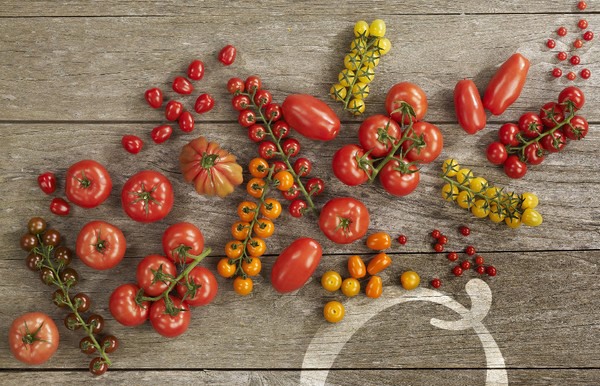The Belgian tomato market has been in a state of flux for the last few weeks. The production has been high for weeks, but the prices are holding up well despite this. The upward trend in the price of vine tomatoes is particularly noticeable. The market for loose tomatoes is more stable.
 Maarten Verhaegen of BelOrta is positive about the price developments. He considers the middle price of well over 50 euro cents for vine tomatoes "not bad for this time of year", but is also concerned. Especially about the Tomato Brown Rugose Fruit Virus and its effects on the market. ToBRFV may be harmless to humans, but growers suffer serious losses when infected.
Maarten Verhaegen of BelOrta is positive about the price developments. He considers the middle price of well over 50 euro cents for vine tomatoes "not bad for this time of year", but is also concerned. Especially about the Tomato Brown Rugose Fruit Virus and its effects on the market. ToBRFV may be harmless to humans, but growers suffer serious losses when infected.
Price holds firm
"There is unrest in the tomato sector because of all the commotion about ToBRFV at home and abroad. Growers have had to cull or are about to do so. At the same time, despite the reporting obligation, nobody wants to talk about it, so there is also a lot of uncertainty*. As a result, buyers have become restless and do not want to miss out if the supply is temporarily reduced due to virus problems.
This effect is particularly visible in vine tomatoes. Whereas 2020 was a bad year, the production is currently going smoothly. "However, the acreage has changed little this season. Production has also been at peak levels for the past four weeks. The fact that, despite this, the price is holding up well, makes me feel positive."

COVID
It would be easy to conclude that this is due to rising consumption again. After all, there is more to do again, such as going out to eat. Nevertheless, Maarten doubts whether the effect of the corona relaxations is this significant. "I think the effect of consumption is limited, especially in the large blocks of loose and vine tomatoes. People eat more tomatoes at home than in restaurants. And especially the specialties, real catering products, did very well last year. That's why I don't think we can place the blame on COVID too easily.
Product security
Not the corona virus, but the ToBRF virus currently seems to be the cause of the market developments. Where growers are forced to cull, product is lost. Sometimes temporarily, sometimes permanently when growers decide to sell cucumbers or peppers instead, for example.
Particularly in vine tomatoes, where the acreages are often larger for individual growers, both nationally and internationally, the loss of acreage has a direct effect on the market. "It isn't the case that shortages will occur, but buyers are restless and try to anticipate, or so it seems."
To offer buyers product certainty, the fact that several growers are affiliated with the cooperative for each product helps BelOrta. In the unlikely event that a grower were to drop out, this would be easier to absorb. Maarten is not an advocate of volume contracts to offer product security. "If the price is not right for the grower, the contracts are worthless."
Shifting production peak
At the moment, the first discussions about next season are happening. It remains to be seen what ToBRFV will do to the market. What is certain is that the virus will remain present for a while. But first it is important to finish this season.
In view of the current positive price developments, Maarten has high hopes for the summer months. Towards the end of the season, however, things will be different. "Because growers are now disposing of their crops earlier, sometimes due to ToBRFV but sometimes also due to disrupted biology in the greenhouse, I understand from the market that things could become difficult from week 45-48 onwards. At that time, the production peak may be higher than normal. Traditionally, imports also pick up then and that can put pressure on prices."
ToBRFV status update
*When asked, the Federal Agency for the Safety of the Food Chain states that Belgium currently officially counts 6 ToBRFV infections. All cases concern production growers in the province of Antwerp. The cause of the infections is not known.
In the event of an infection, symptomatic and neighbouring plants must be removed, other plants may remain until the crop is changed. The FASFC does not have percentages of how many crops have been contaminated.
According to the latest figures, the Netherlands has 26 contaminations. Growers here reported crop losses of 5-30%. The NVWA estimates that the removal and disposal of the crop will cost the grower 5 to 10 thousand euros per hectare.
The virus continues to emerge internationally as well. Recently in Hungary, Bulgaria and Norway, the European and Mediterranean Plant Protection Organization (EPPO) reported in a June update.
For more information:
Maarten Verhaegen 
BelOrta
Mechelsesteenweg 120
2860 Sint-Katelijne-Waver
+32 (0)15 56 53 17
maarten.verhaegen@belorta.be
www.belorta.be
